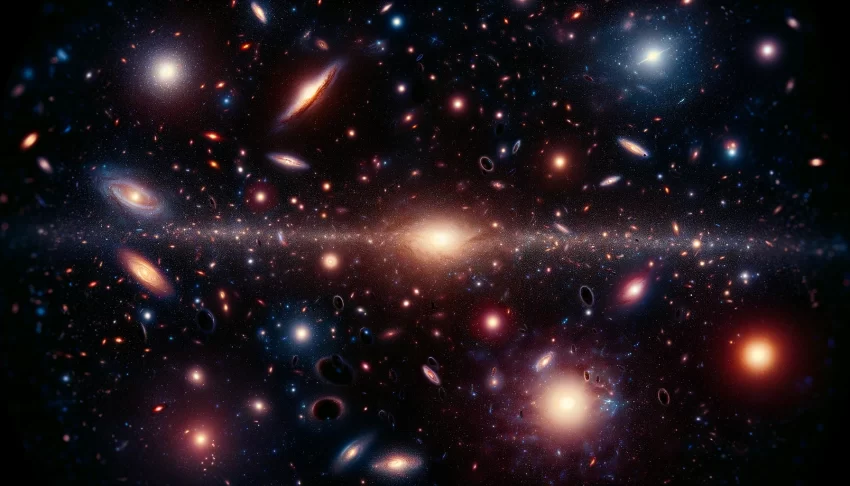| Listen to our audio presentation: History of the Computer |
Recent discoveries from the EIGER and FRESCO JWST Surveys have dramatically increased our understanding of faint active galactic nuclei (AGNs) in the early universe, revealing an abundant population at redshift z ≈ 5. This research, published in The Astrophysical Journal, sheds light on the prevalence and characteristics of these faint AGNs, providing insights into the formation of supermassive black holes (SMBHs) and their role in cosmic reionization.
Using deep JWST/NIRCam imaging and wide-field slitless spectroscopy, researchers identified 20 broad Hα emitters, indicating active accretion onto SMBHs. These findings challenge previous expectations based on quasar UV luminosity functions, showing a much higher number density of faint AGNs. These AGNs, often obscured and contributing minimally to cosmic reionization, offer a new perspective on the growth and visibility of black holes in the early cosmos.
The study also highlights the critical role of JWST’s infrared capabilities in identifying these AGNs, which were largely invisible to previous surveys. This work not only expands our knowledge of the early universe’s structure but also raises questions about the nature and evolution of faint AGNs, their contribution to the ionizing background, and the mechanisms driving SMBH growth.
Historically, AGNs were believed to be rare and bright, with their true ubiquity at high redshifts remaining elusive until the advent of more sensitive infrared observations. This research bridges the gap between the known population of bright quasars and the fainter AGN population, crucial for understanding SMBH seeding and growth. The identification of faint AGNs at z ≈ 5 challenges existing models of cosmic reionization, suggesting that while AGNs are more common in the early universe than previously thought, their contribution to reionization may be limited due to heavy obscuration and low escape fractions of ionizing photons.

